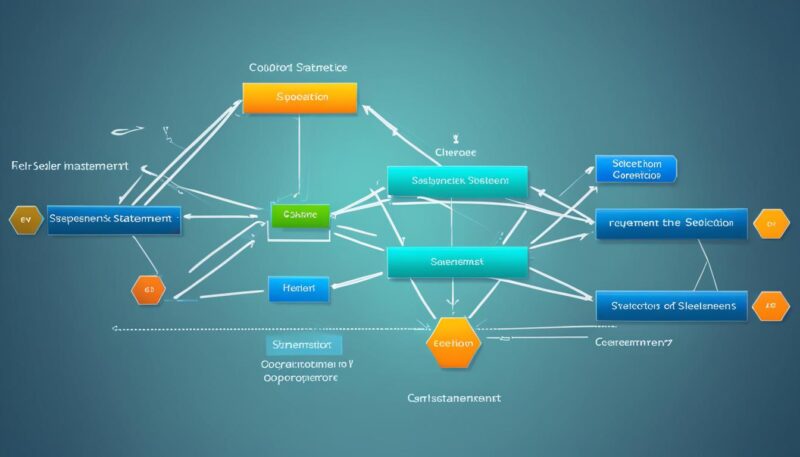Reflect back to the first time you wrote a Java program. Remember the excitement, the curiosity, and perhaps the slight confusion? That’s the journey of every coder. For many, that journey reveals that Java is more than just syntax and code; it’s about making decisions. Decision-making in Java is where the magic happens, where your code starts to emulate real-world thinking. Selection statements in Java serve as the heart of this process, allowing dynamic and responsive behaviors depending on various conditions. These statements form the foundation of Java programming basics, enabling developers to build both simple and sophisticated control flows in their applications. Understanding selection statements like ‘if’, ‘if-else’, ‘nested if’, and ‘switch’ is essential for anyone striving to master Java control structures and bring their ideas to life.
Key Takeaways
- Selection statements in Java are pivotal for decision-making in programs.
- They shape the dynamic and responsive nature of Java applications.
- Key Java selection statements include ‘if’, ‘if-else’, ‘nested if’, ‘if-else-if’, and ‘switch’.
- Mastering these statements is crucial for Java programming basics.
- Understanding Java control structures enhances the ability to create efficient applications.
Understanding Java Selection Statements
Java conditional statements play a crucial role in directing the flow of a program based on certain conditions. These selection statements enable developers to control the logic and decision-making processes within their code. Let’s delve deeper into the types of Java selection statements.
Types of Selection Statements in Java
Java offers several selection statements for handling conditions and making decisions. These include if statements, if-else statements, nested if statements, and switch statements. Each serves a unique purpose and helps create optimized, readable code.
If Statements
The if statement is the simplest form of a Java conditional statement. It executes a specific block of code only if a given condition evaluates to true. This is fundamental to controlling the program’s execution path.
Here’s a basic example:
if (condition) {
// code to be executed if condition is true
}
If-Else Statements
If-else statements extend the basic if statement by providing an alternative path of execution if the initial condition is false. This allows for more complex decision-making and flow control.
- If the condition is true, the code within the if block executes.
- If the condition is false, the code within the else block executes.
Example:
if (condition) {
// code to be executed if condition is true
} else {
// code to be executed if condition is false
}
Nested If Statements
Nesting if statements allow developers to place multiple if statements within one another to test multiple conditions consecutively. This technique is beneficial when handling conditions that require multiple layers of checks.
Example:
if (condition1) {
if (condition2) {
// code to be executed if both conditions are true
}
}
Switch Statements
The switch statement simplifies multi-way branching and is a robust alternative to the nested if approach. It evaluates an expression and executes the corresponding case block that matches the expression’s value.
Switch statements are compatible with byte, short, int, and char types. Since JDK 7, Java has also supported switch on String.
Here’s how a switch statement looks:
switch (variable) {
case value1:
// code to be executed if variable == value1
break;
case value2:
// code to be executed if variable == value2
break;
default:
// code to be executed if variable doesn't match any case
}
Employing these Java conditional statements effectively can lead to clean, maintainable, and efficient code.
What Are Selection Statements in Java
Selection statements are essential for controlling the flow of Java programs. They allow developers to build dynamic applications that can make decisions based on certain conditions. Understanding these mechanisms is crucial for writing efficient and effective Java code.
Java Control Flow and Branching
In Java, control flow refers to the order in which statements and instructions are executed. Selection statements facilitate branching in Java by letting the program choose different paths based on specific conditions. A common example is the ‘if’ statement, which directs the program to execute certain code only when a condition evaluates to true. Branching in Java ensures that a program can handle multiple scenarios, making it adaptable and robust. Through various control flow statements, developers can map out intricate paths for Java code execution paths, enabling precise and desired outcomes.

Conditional Logic in Java
Conditional logic in Java is built around the evaluation of boolean expressions, which can result from relational, logical, and equality operators. These boolean results dictate the path the program takes. For instance, logical operators in Java like ‘&&’ (and), ‘||’ (or), and ‘!’ (not) are fundamental in composing complex conditional logic. An ‘if-else’ statement allows for an alternative execution path if the initial condition is not met. Switch statements go further by enabling multiple execution paths based on a variable’s value. This high degree of control helps manage various scenarios smoothly, maintaining clear Java code execution paths and streamlining the process in Integrated Development Environments (IDEs).
Conclusion
Understanding Java programming basics, particularly selection statements, provides a foundation for crafting efficient and responsive applications. Selection statements such as Java if statements and switch-case structure are essential tools that empower developers to implement conditional logic, guiding the flow of execution and enhancing the decision-making capacity of their programs.
Mastery of these concepts marks a significant milestone in a developer’s journey. By recognizing when and how to use ‘if’, ‘if-else’, ‘nested if’, and ‘switch’ statements, developers can ensure their code is both robust and performant. This deeper knowledge of Java selection statements not only improves program functionality but also reflects a strong command over the logic and structure of the code.
In essence, these selection statements are not just about directing code execution; they are a testament to a developer’s skill and understanding of conditional logic within Java programming. As you continue to explore and apply these principles, you’ll find that knowing the nuances of Java if statements and the switch-case structure will enable you to build more sophisticated, adaptable, and efficient software solutions.
Source Links
- https://www.scaler.com/topics/selection-statement-in-java/
- https://www.makeuseof.com/java-selection-statements/
- https://www.geeksforgeeks.org/decision-making-javaif-else-switch-break-continue-jump/








